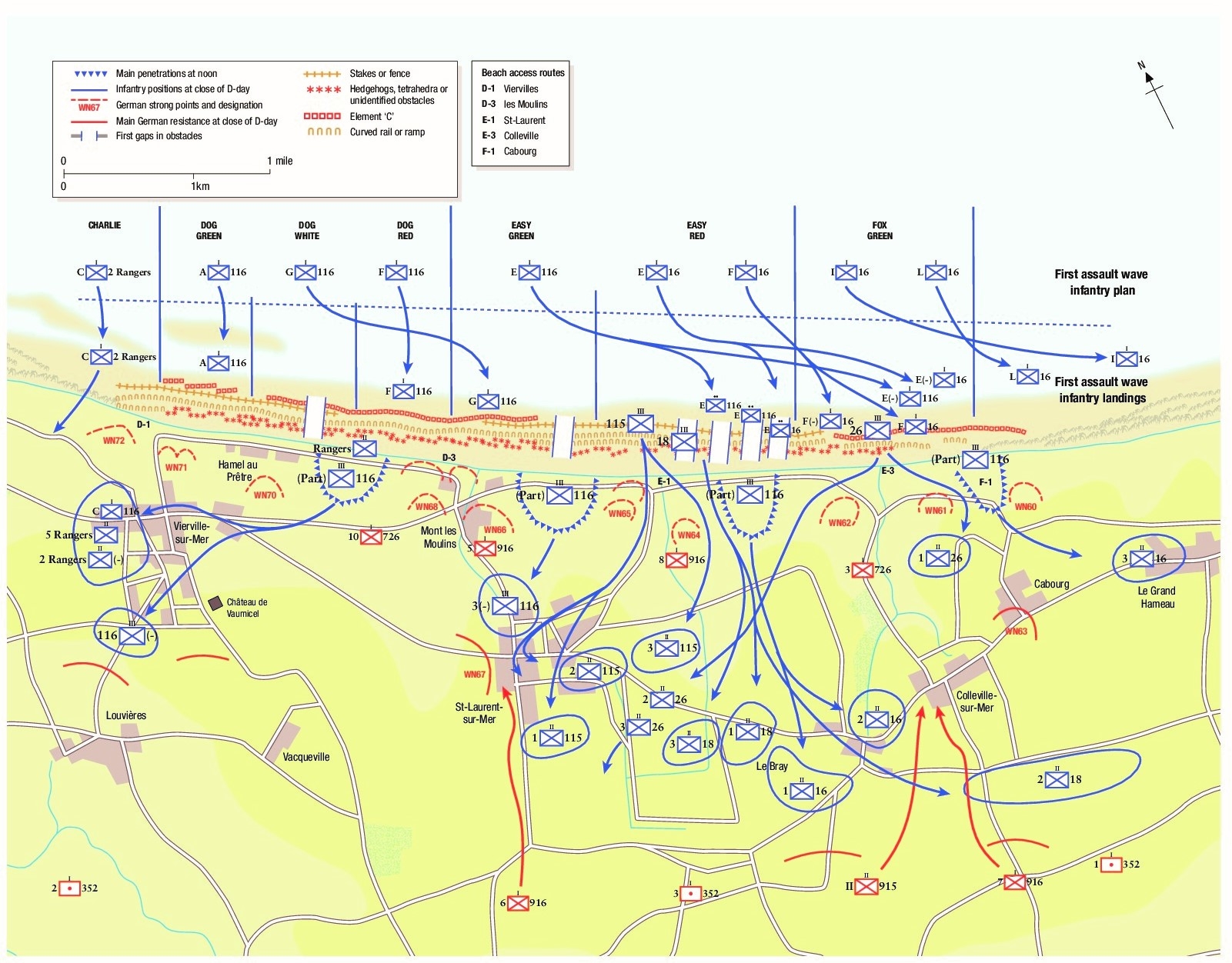Today is the 75th Anniversary of the D-Day landings. To commemorate this anniversary of the landings, we look at the key assaults that occurred that day using a few extracts from Steven Zaloga’s Atlas of the European Campaigns 1944-45.
This blog post examines the events on Omaha Beach.
"The D-Day landings by V Corps at Omaha Beach were a mixed success. Casualties were the heaviest of all five Allied beach operations, and the landings failed to achieve their initial geographic goals. On the other hand, after a harrowing day of intense fighting, the 1st and 29th Infantry divisions were firmly ashore, and the German 352.Infanterie- Division was sufficiently battered to prevent any significant counterattack.
One of the main problems of the Operation Neptune plans at Omaha Beach was that they presumed that the German beach strongpoints would be obliterated by the prelanding bombardment. As a result, the main landings were conducted directly against the entrances to the draws where the German fortified defenses were the densest. The five draws on Omaha Beach were given codenames based on their presence in the various landing sectors: the D-1 draw was in the Dog Beach sector, E-1 in the Easy Beach sector, and so on. Owing to the failure of the initial naval bombardment and the completely ineffective aerial bombardment, the first landing waves of landing craft unloaded directly in front of the main German bunker complexes.
Although the German strongpoints along the beach caused very high casualties among the first assault waves, the main effect of the German strongpoints was to tie down the American infantry and engineers along the exposed beach, making them extremely vulnerable to over an hour of mortar and artillery fire from German positions farther away from the beach. The Allies were under the mistaken impression that the 352.Infanterie-Division was stationed south of the beach area and that Omaha Beach was weakly defended by a few battalions of the second-rate 716.Infanterie-Division. In fact, the 352. Infanterie-Division had begun to move into the Omaha Beach area in February and March 1944. Aside from increasing the number of troops defending the beach, this meant that the division’s four artillery battalions were within range of the beach. Unaware of this extensive artillery force, no counterartillery plan was prepared for Omaha Beach.
The battered landing force received significant help in mid-morning when the accompanying destroyers ignored the shallow water offshore and steamed to point-blank range off the beach to pound the German defenses. The German bunkers were so thickly built with steel reinforced concrete that they could not be easily penetrated by 5in. destroyer guns. Nevertheless, the destroyers approached so close to shore that they were able actually to hit the insides of the most dangerous gun bunkers through their open embrasures.
In spite of the casualties, the German defenses began to crumble by mid-morning. US infantry platoons away from the main killing zones near the draws were able to make their way up the bluffs between the main German strongpoints. The main penetrations occurred east of the D-1 Vierville draw by the 116th Infantry Regiment and 2nd Rangers, and west of the E-3 draw by the 16th Infantry Regiment. The gradual reduction of the German defenses had a dramatic impact on the casualties of the 1st and 2nd Wave, falling from 1,978 casualties in the 1st Wave to 307 men in the 2nd.
By the end of D-Day, V Corps had a solid foothold on Omaha Beach, which German forces in the immediate area would have a hard time to contest over the next few days."
- Steven Zaloga, Atlas of the European Campaigns 1944-45, page 42
To find out more about D-Day, head to the blog and order your copy of Atlas of the European Campaigns 1944-45.



Comments
You must be logged in to comment on this post. Click here to log in.
Submit your comment